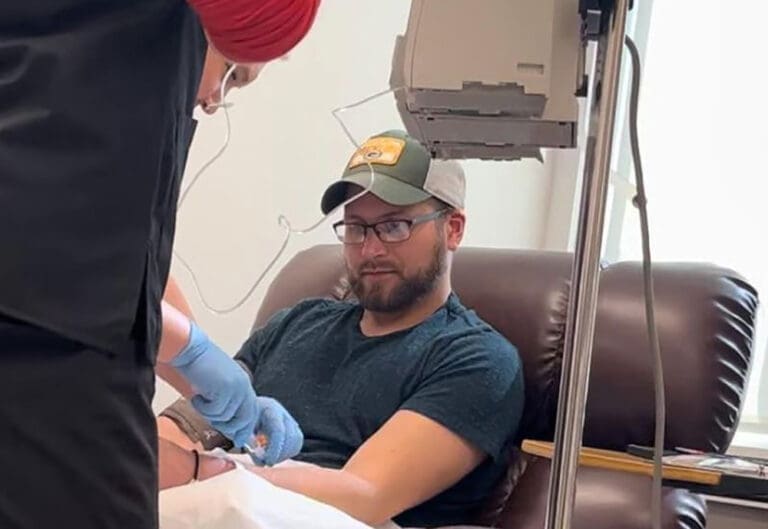We’re in a remarkable era for hemophilia treatment, with options available today that were unimaginable just a decade ago. A condition that once significantly limited life expectancy and quality of life is now increasingly manageable, thanks to groundbreaking treatment advancements including extended half-life factors, non-factor therapies, and gene therapy.
What is hemophilia?
Hemophilia is a group of bleeding disorders that typically occurs in males because it is an X-linked genetic disorder. It’s characterized by a missing or deficient clotting protein in the plasma, which prevents blood from clotting properly and prolongs bleeding. There are three types of hemophilia:
- Hemophilia A: Occurs when plasma lacks sufficient clotting factor VIII. This is the most common type of hemophilia, affecting approximately 10 in 100,000 people, according to the CDC.
- Hemophilia B: Occurs when plasma lacks sufficient clotting factor IX. The CDC estimates this type affects 3 in 100,000 people.
- Hemophilia C: Occurs when plasma lacks sufficient clotting factor XI. This type is very rare, affecting about 1 in 100,000 people.
Hemophilia typically manifests as joint bleeds, but surgical and trauma bleeds can happen.
Progress in hemophilia treatment
Historically, hemophilia treatment focused on replacing the missing clotting factor through infusions. For example, patients with hemophilia A would receive regular infusions of factor VIII, while those with hemophilia B would receive factor IX. This approach effectively manages bleeding episodes but requires consistent and often lifelong treatments, sometimes multiple infusions per week. While factor replacement has saved countless lives and allowed individuals with hemophilia to live fuller lives, it can be costly, time-consuming, and disruptive to daily life.
The development of extended half-life factor replacement therapies marked a significant advancement in hemophilia treatment. Unlike traditional factor infusions, these therapies last longer in the bloodstream, reducing the frequency of treatments. Some patients have been able to reduce infusions to once every ten days, significantly improving their quality of life.
Next came a new class of drugs known as non-factor therapies, which act differently from traditional factor replacement. Non-factor therapies, such as emicizumab (marketed as Hemlibra), mimic the activity of clotting factor VIII to prevent bleeding episodes without directly replacing the missing factor. These therapies have been life-changing for some patients, offering effective bleeding prevention with fewer injections. Non-factor therapies are especially beneficial for patients who develop inhibitors, which are antibodies that block the effectiveness of traditional factor infusions. However, even these treatments will require the need for an infusion of factor VIII medications to treat a bleeding episode that can still occur.
Gene therapy is the next frontier in hemophilia care
The most revolutionary advancement in hemophilia treatment may be gene therapy. By addressing the underlying genetic cause of hemophilia, gene therapy has the potential to restore the body’s ability to produce the missing clotting factor, eliminating or significantly reducing the need for regular treatments. This innovation could free patients from the constant cycle of infusions or injections, a prospect that was once considered unattainable.
Clinical trials have shown promising results, with some patients achieving normal or near-normal levels of clotting factors after a single gene therapy treatment. Although gene therapy is not yet widely available, it represents the next frontier in hemophilia care.
A future where hemophilia treatment is as simple as a one-time gene therapy is within reach. This is the goal, and significant strides are being made to achieve it.
The role of clinical trials and patient courage
These advances in hemophilia treatment – from factor replacement to non-factor therapies to gene therapy – were made possible by the bravery of patients who participated in clinical trials. Many enrolled not only to improve their own situations but also with the hope that their contributions would benefit future generations of hemophilia patients.
Learn more about hemophilia
Green Bay Oncology has partnered with the Hemophilia Outreach Center for more than a decade to ensure hemophilia patients in Wisconsin and Upper Michigan have access to the latest advancements in treatment. In addition to providing state-of-the-art treatments, the Hemophilia Outreach Center offers education and support to help patients and their families live as normal a life as possible.








